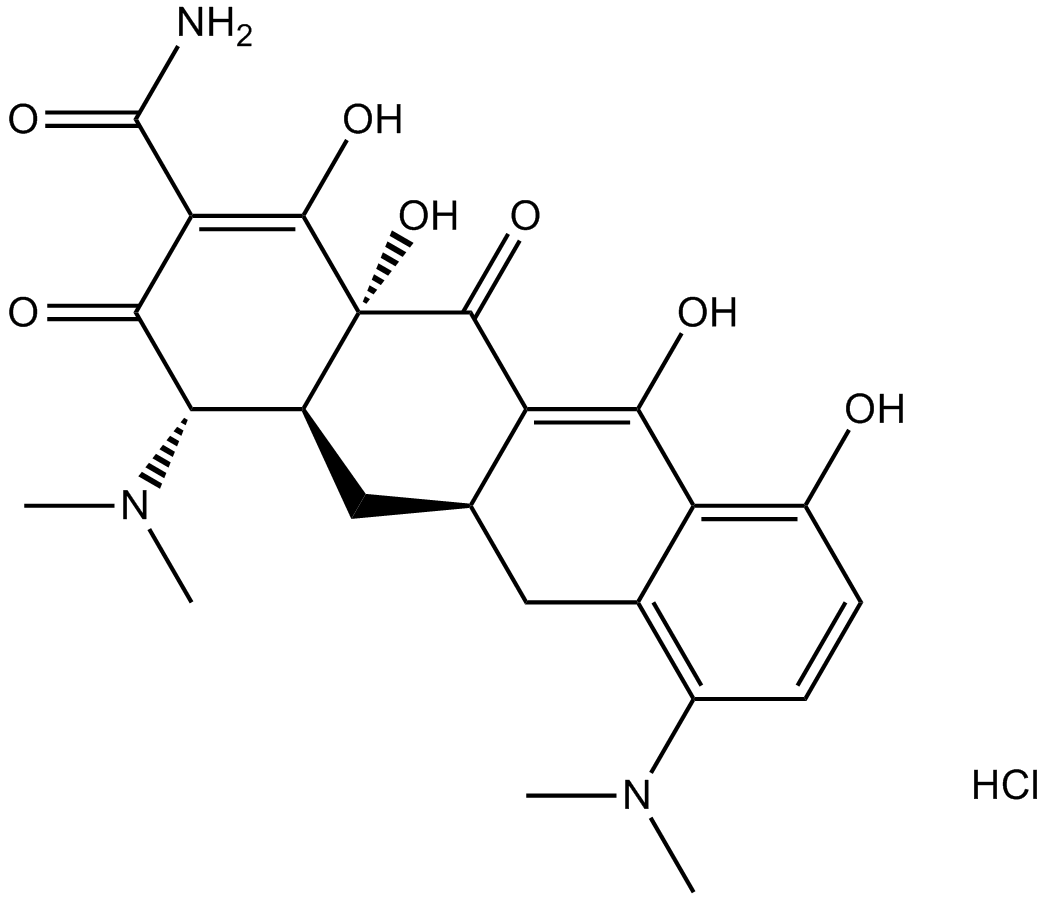Minocycline HCl |
| Catalog No.GC11861 |
Minocycline HCl is an orally active, potent and BBB-penetrated semi-synthetic tetracycline antibiotic.
Products are for research use only. Not for human use. We do not sell to patients.

Cas No.: 13614-98-7
Sample solution is provided at 25 µL, 10mM.
Minocycline hydrochloride is a broad-spectrum tetracycline antibiotic, acting by binding to the bacterial 30S ribosomal subunit and inhibiting protein synthesis.
References:
[1]. Hu X, Wu B, Wang X, et al. Minocycline attenuates ischemia-induced ventricular arrhythmias in rats. Eur J Pharmacol. 2011 Mar 11;654(3):274-9.
[2]. Tao R, Kim SH, Honbo N, et al. Minocycline protects cardiac myocytes against simulated ischemia-reperfusion injury by inhibiting poly(ADP-ribose) polymerase-1. J Cardiovasc Pharmacol. 2010 Dec;56(6):659-68. doi: 10.1097/FJC.0b013e3181faeaf0.
[3]. Padi SS, Kulkarni SK. Minocycline prevents the development of neuropathic pain, but not acute pain: possible anti-inflammatory and antioxidant mechanisms. Eur J Pharmacol. 2008 Dec 28;601(1-3):79-87. doi: 10.1016/j.ejphar.2008.10.018.
[4]. Brundula V, Rewcastle NB, Metz LM, et al. Targeting leukocyte MMPs and transmigration: minocycline as a potential therapy for multiple sclerosis. Brain. 2002 Jun;125(Pt 6):1297-308.
[5]. Tikka T, Fiebich BL, Goldsteins G, et al. Minocycline, a tetracycline derivative, is neuroprotective against excitotoxicity by inhibiting activation and proliferation of microglia. J Neurosci. 2001 Apr 15;21(8):2580-8.
Average Rating: 5 (Based on Reviews and 18 reference(s) in Google Scholar.)
GLPBIO products are for RESEARCH USE ONLY. Please make sure your review or question is research based.
Required fields are marked with *




